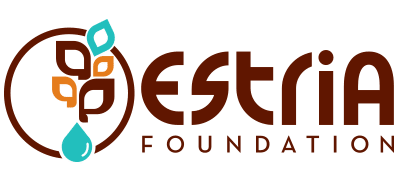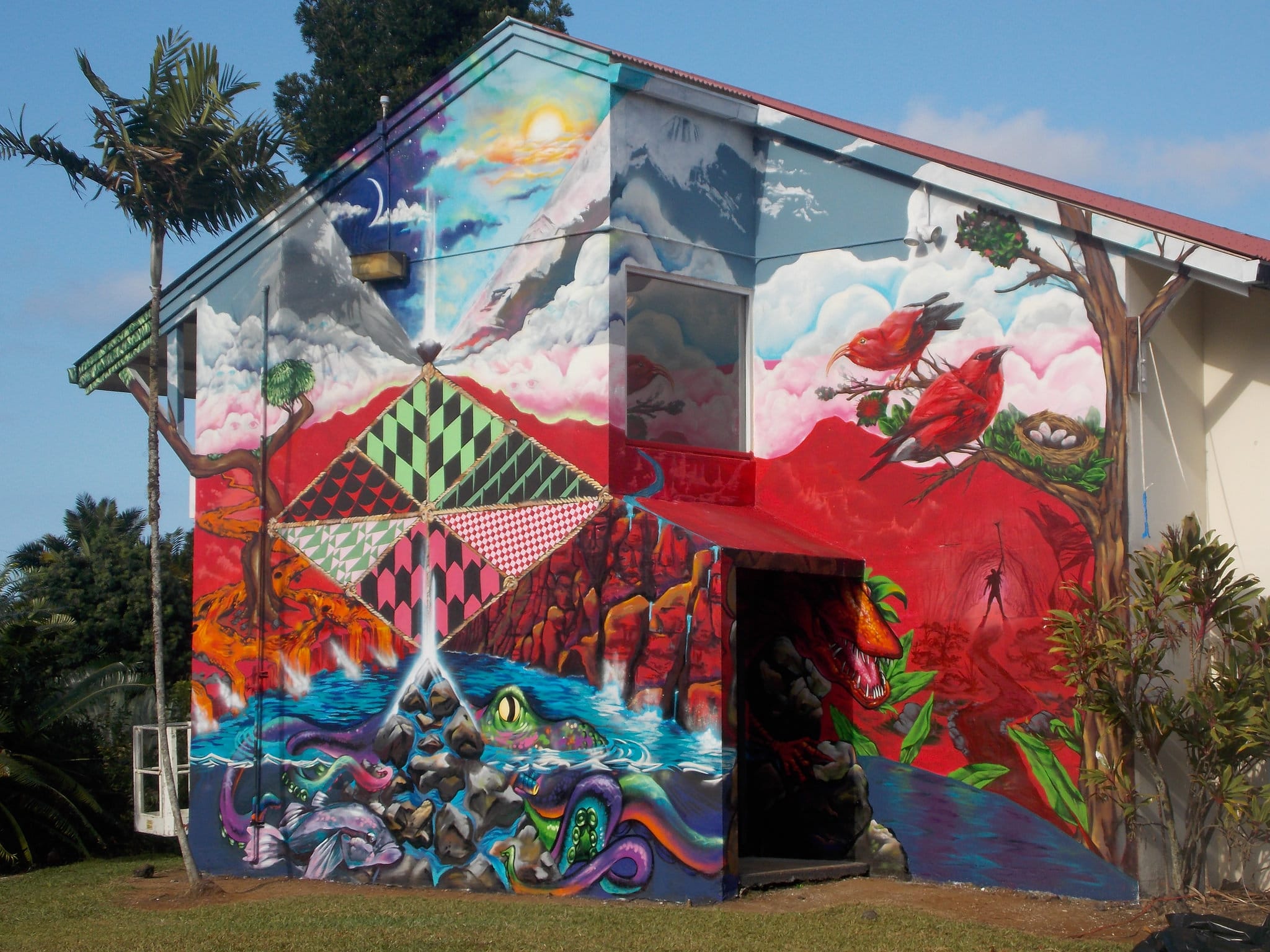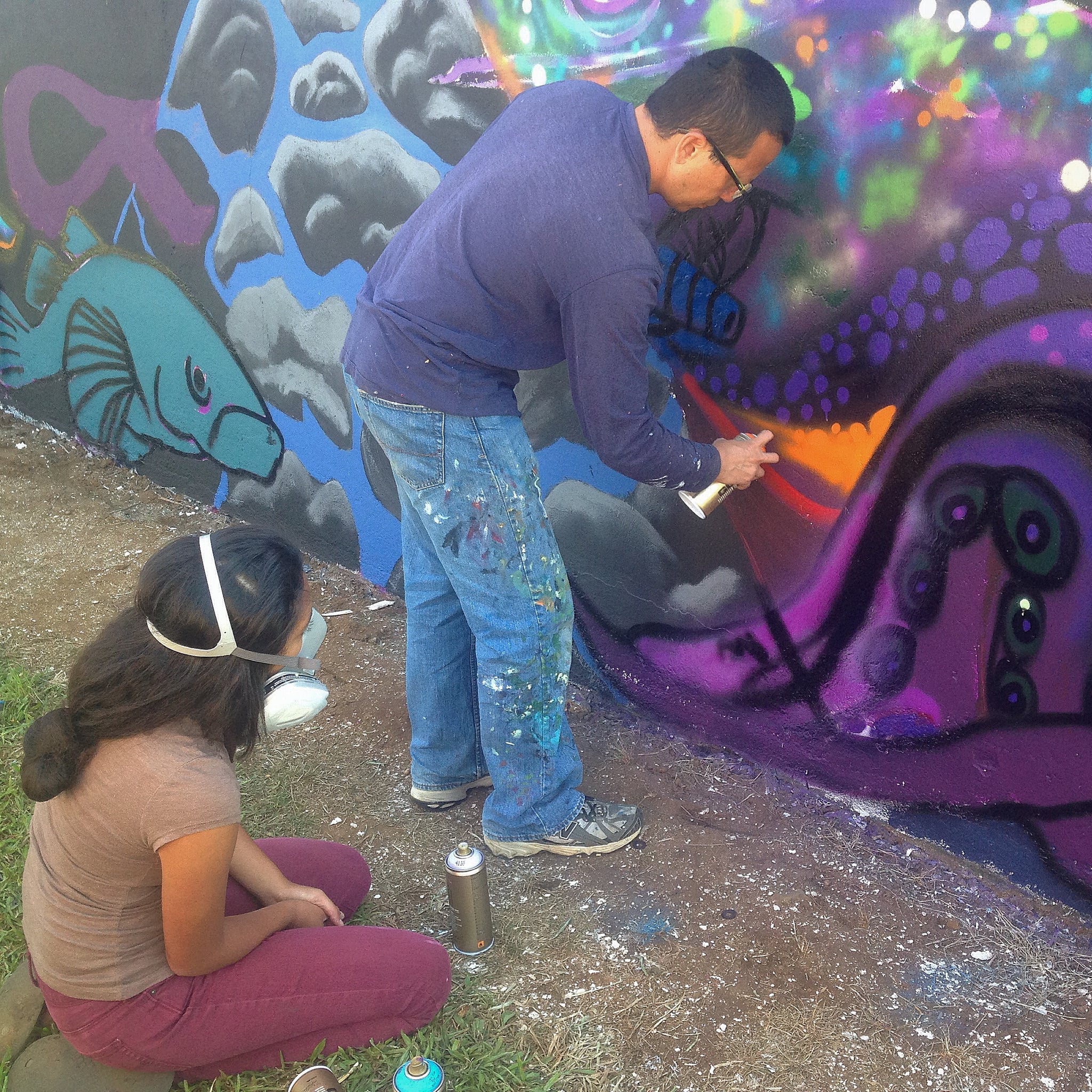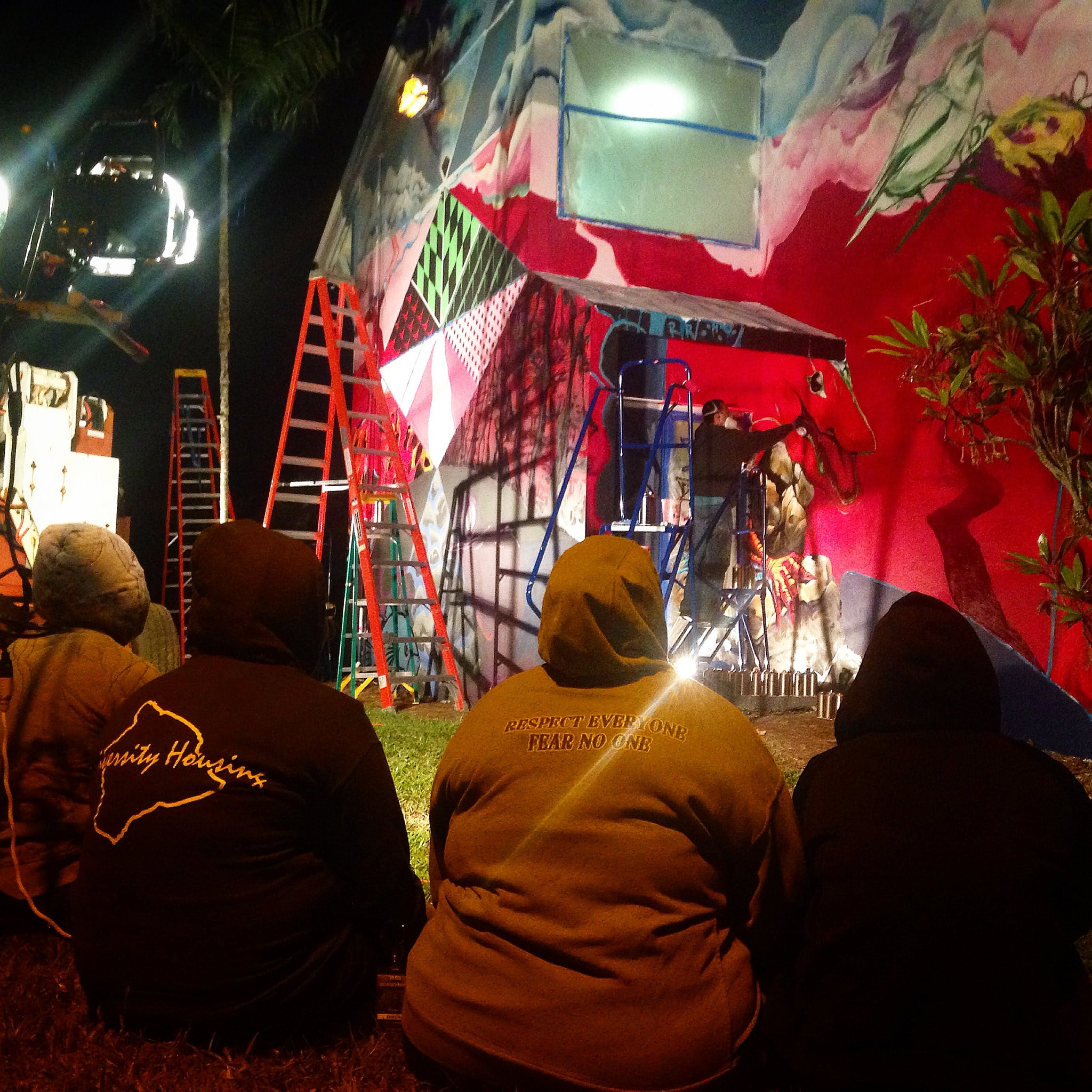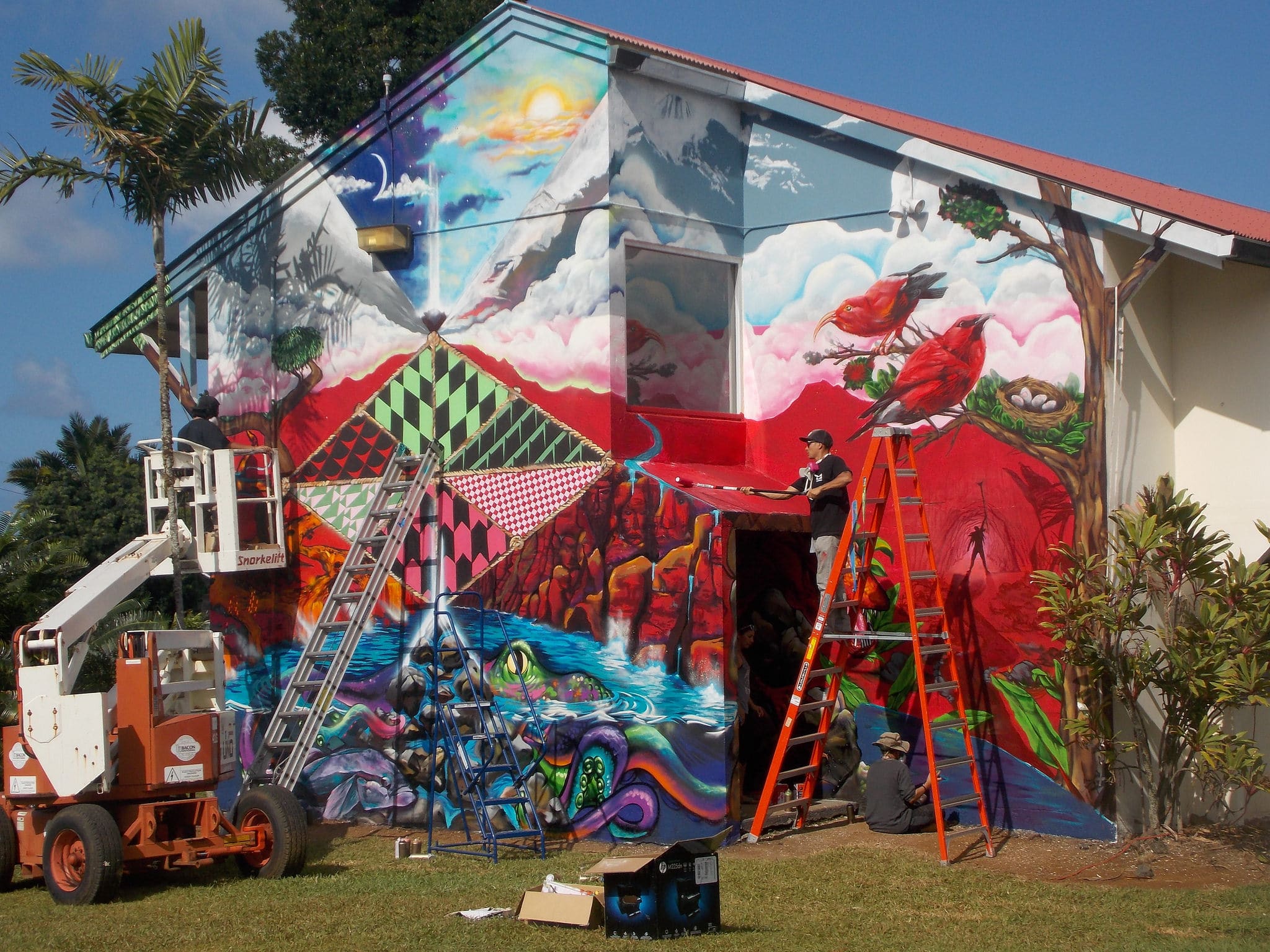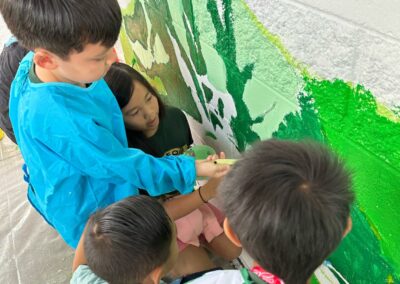University of Hawaii at Hilo
Hale Kauanoe Residence Hall, Hilo, Hawai‘i
This was the first of several Mele Mural projects completed with the University of Hawai‘i at Hilo. The images in this mural are filled with kaona (multiple meanings in Hawaiian). The university campus is adjacent to the Mokaulele Forest, renowned for its scarlet ‘ōhi‘a-lehua and is now an endangered species. The forest was filled with the equally bright ‘apapane and ‘i‘iwi birds, which are also rendered into the mural.
Opposite the ‘ōhi‘a-lehua stands a koa tree. Kamehameha Pai‘ea harvested the koa of Hilo, both wood and warriors, to build his peleleu fleet of conquest. Both koa and ‘ōhi‘a-lehua represent strength: Koa, the strong warrior, masculine and ready to fight; Lehua, the female warrior, fighting at need and regenerating after destruction.
From Mauna Loa, lava flows past the koa tree into the sea. The māhu (steam) of the lava meeting the sea is mirrored by the ‘ehu (spray) of Mauna Kea’s streams flowing into the ocean. Kanaloa, the akua/god or embodiment of the ocean, is revealed in his he‘e kinolau, octopus body form. An ‘o‘opu, fish that sought knowledge, rests on the rocks in the stream. In the distance stands Kāwili, the bird catcher of Puna.
The moon, a symbol of Hina, a prominent goddess in Hilo traditions who appears in many aspects or as many sisters, is depicted in its Hilo phase—the first slim crescent visible after the new moon, and namesake of the Hilo district of this island. A cave with in the doorway unveils the mo‘o (lizard/dragon) Kuna peering out and the waterfall that guards Hina.
To the right of the moon, Hānaiakamalama (Southern Cross) stands upright, denoting winter, the time of Lono and rain. At the division of night and day, a column of light flows between earth and sky. Below, the column returns as water flowing into the sea. The sun sets over the shoulder of Mauna Kea. In Hawaiian tradition, the setting of the sun, not the rising, signals the start of a new day.
A matrix of cordage contains more symbolism of land, sea, and sky, drawing all together in unity. Each section defined by the cordage holds symbolic themes of water and ancestry. Faces of kūpuna—ancestors—gaze solemnly from rocks, water, and clouds. The ‘ohe kapala triangle motifs repeat in the rocks, water, cordage, Mauna Loa, and Mauna Kea. These triangles represent the makawalu concept and the role that it plays in place based learning. It represents the dynamic Hawaiian world view of the physical, intellectual, and spiritual foundations of the cycles of life.
Mural Name
Konikoni ana i ka iwi Hilo (The energy/passion of the bones of Hilo)
Date Completed
November 2014
School Served
University of Hawaiʻi at Hilo, Kanu o ka ‘Āina Learning ‘Ohana
Lead Artists
Estria Miyashiro, Kanoa Castro, Jesse Velasquez, Beethoven Villarmino
Cultural Practitioners, Kūpuna, Community Orgs
Partnerships with the University of Hawai‘i at Hilo – Office of the Chancellor, the Hoʻokahua Project (applied learning), Kīpuka Native Hawaiian Student Center, University Housing, and Hale Kanilehua Living Learning Community.
Sponsors
We Need Your Help
Your tax deductible Annual Membership provides much needed support for arts education in Hawaiʻi.
Help purchasing much needed supplies for our wall murals.
Assist in funding cultural advisers for our youth workshops.
Help stage events surrounding our public mural unveilings.
We Need Your Help
Your tax deductible Annual Membership provides much needed support for arts education in Hawaiʻi.
Help purchasing much needed supplies for our wall murals.
Assist in funding cultural advisers for our youth workshops.
Help stage events surrounding our public mural unveilings.
